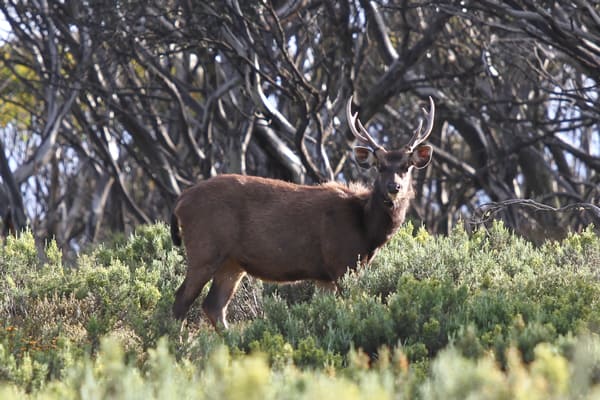After three wasted years the Tasmanian Government is no closer to addressing the unfolding environmental crisis caused by expanding fallow deer numbers, the Invasive Species Council warned after the release of new feral deer survey data today.
The survey data is available at www.dpipwe.tas.gov.au/deer-survey
“We are disappointed that three years after a parliamentary inquiry found fallow deer have spread into sensitive conservation areas including the Tasmanian Wilderness World Heritage Area the Tasmanian Government is only now starting to develop a plan to tackle the problem,” Invasive Species Council CEO Andrew Cox said.
“The Tasmanian Government survey of the worst areas affected by feral deer estimates there are 54,000 deer in these areas alone, and the survey didn’t even cover the Tasmanian Wilderness World Heritage Area.
“These new feral deer numbers are shocking and much worse than we expected.”
The survey results suggest that earlier studies warning of increasing feral deer numbers in Tasmania underestimated the growth and spread of the total deer population.
“In 2016 it was estimated there were 25,000 feral deer in Tasmania and that numbers could increase by 40 per cent in just ten years and exceed one million by mid-century if there is no active management,” Mr Cox said.
“In just four years it looks like the estimated number of feral deer in Tasmania has more than doubled.
“Deer are increasingly threatening farms, conservation areas and pose a serious vehicle accident risk.
“In releasing the survey results, the Tasmanian Government proudly talks about striking a balance between managing deer for hunters and protecting Tasmanian farmers and the environment from the destructive impacts of deer, and yet its response has been entirely one-sided.
“The newly-formed Tasmanian Game Council is entrenching hunting interests and there has been no action to stop deer moving into the Tasmanian Wilderness World Heritage Area.
“All we have seen is new areas opened to hunting, an ineffective measure to control deer numbers and limit deer spread.
“Tasmania and Victoria are now the only states in Australia failing to treat deer as a pest species and are instead managing them as a ‘game’ animal, protecting feral deer as a resource for hunters and limiting control efforts.”
The Invasive Species Council is calling on the Tasmanian Government to put in place a deer management strategy that ensures:
- Deer are managed as a pest animal in line with the rest of Australia.
- Deer no longer receive special protection under the Tasmanian Wildlife Regulations.
- Surveys of deer encroachment on the TWWHA are completed.
- Deer containment lines are drawn at the edge of the TWWHA and other suitable boundaries and resources secured to ensure all deer beyond containment lines are eradicated.
- Deer are eradicated from Bruny Island within two years.









